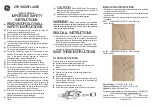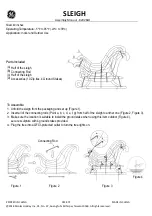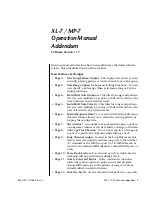
IMPORTANT SAFEGUARDS
READ AND FOLLOW ALL SAFETY INSTRUCTIONS
1.
WARNING
– Dual Power Supply - Risk of shock hazard even if AC power is OFF.
2.
WARNING
–
Disconnect polarized TSPL (Test Switch Pilot Light) connector before servicing fixture.
3.
WARNING
–
DO NOT remove the wire harness connector when AC Power is ON.
4.
WARNING
–
DO NOT mount near a gas or electric heater.
5.
WARNING
–
Battery Pack Output Voltage is 1600Vdc.
6.
CAUTION
– Before wiring to power supply, turn off electricity at fuse panel or circuit breaker.
7.
CAUTION
– All servicing shall be performed by qualified personnel.
8.
CAUTION
– DO NOT attempt to service the battery. It is not field replaceable.
9.
CAUTION
– DO NOT use outdoors, in air handler heated outlets, or in hazardous locations. This product is for
use with indoor fixtures, sealed or unsealed.
10.
CAUTION
– DO NOT use accessory equipment not recommended by the manufacturer.
11.
CAUTION
– DO NOT use this equipment for other than its intended use.
12.
CAUTION
– Verify that all replacement lamp types marked on the installed luminaire are also identified as suit-
able for use with this inverter/charger pack.
13. Consult your local building code for approved wiring or installation.
14. The emergency battery pack must be connected to an un-switched AC power source of 120 to 277 Vac.
15. Equipment should be mounted in a location and at heights where it will not be readily subject to tampering by
unauthorized personnel.
16. Make sure that the branch circuits are derived from a common phase for both normal lighting ballast and Bat-
tery Pack
prior
to installation.
17. The Battery Pack can be switched or un-switched (night) circuit. When used with a switched fixture, it is impor-
tant that the power to the Battery Pack be provided by an un-switched circuit.
18. Damage to the battery will occur if the TSPL (Test Switch Pilot Light) connection is made for a prolonged pe-
riod of time without AC power being provided.
19. Allow Battery Packs to charge 24 hrs before initial and full-discharge testing.
20. Do not locate the TSPL (Test Switch Pilot Light) or route its cable within 1” of fixture lamps.
21. Emergency lighting system should be tested per all of the required tests and as often as local codes require or
at least quarterly to ensure all components are operational.
21. Lighting fixture manufacturers, electricians, and end-users need to ensure product system compatibility before
final installations.
SAVE THESE INSTRUCTIONS
P-32
FLUORESCENT EMERGENCY
LIGHTING EQUIPMENT
INSTRUCTION MANUAL
P.O. BOX 11846 TUCSON, AZ 85734
(520) 294-3292 • FAX (520) 741-2837
www.iotaengineering.com
Coming Soon






















